Applying spar urethane is an essential step in protecting wood surfaces from external elements like water, sunlight, and heat. Spar urethane is a durable finish that is perfect for outdoor woodwork, as it provides a protective layer that can withstand harsh weather conditions. In this article, I will guide you through the process of applying spar urethane to your wooden surfaces, from preparation to maintenance.

Before applying spar urethane, it is important to understand what it is and its properties. Spar urethane is a type of polyurethane that contains added UV absorbers and other additives to make it more durable and resistant to weathering. It is commonly used for outdoor woodwork, but can also be used for indoor surfaces. Spar urethane comes in both oil-based and water-based versions, and choosing the right one depends on the type of wood and the desired finish.
To achieve a smooth and even finish, proper preparation and choosing the right tools are crucial. The surface must be clean, dry, and free from dirt, oil, or grease before applying the spar urethane. Sanding the surface to get it ready for the urethane is also important. Choosing the right tools, such as a cotton rag applicator pad, can help avoid brush marks and bubbles. Thin the varnish with mineral spirits, paint thinner, or naptha, and apply smooth thin coats. Apply twice as many coats as brushing to achieve the desired finish.
Key Takeaways on How to Apply Spar Urethane
- Spar urethane is a durable finish that protects wood surfaces from external elements.
- Proper preparation and choosing the right tools are crucial for achieving a smooth and even finish.
- Thin the varnish with mineral spirits, paint thinner, or naptha, and apply smooth thin coats to achieve the desired finish.
Understanding Spar Urethane
As a woodworker, I have come across many finishing products, but one that stands out is Spar Urethane. It is a popular choice for exterior woodwork such as doors, windows, and decks. In this section, I will explain what Spar Urethane is, its types, and the benefits of using it.
What is Spar Urethane?
Spar Urethane is a type of clear protective coating that is commonly used for exterior woodwork. It is a blend of urethane and alkyd resins that creates a durable finish that can withstand harsh weather conditions. The term “spar” comes from the nautical industry, where it was used to protect wooden boat spars from the elements.
Types of Spar Urethane
There are two types of Spar Urethane; water-based and oil-based. Water-based Spar Urethane is a newer technology that is more environmentally friendly. It dries faster and has less odor than oil-based Spar Urethane. Oil-based Spar Urethane, on the other hand, has been around for a longer time and is known for its durability. It also gives a deeper, richer finish than water-based Spar Urethane.
Benefits of Using Spar Urethane
One of the main benefits of using Spar Urethane is its durability. It can withstand harsh weather conditions, including rain, snow, and UV rays. It also provides excellent protection against water damage and fading. Another benefit is its high gloss finish, which enhances the natural color of the wood.
Spar Urethane is also easy to apply, and it dries quickly, allowing for multiple coats in a day. It is also easy to clean up with soap and water.
In conclusion, Spar Urethane is an excellent choice for exterior woodwork. Its durability, UV protection, high gloss finish, and natural color enhancement make it a popular choice among woodworkers. Whether you choose oil-based or water-based Spar Urethane, you can be confident that your woodwork will be protected for years to come.
Preparation for Application
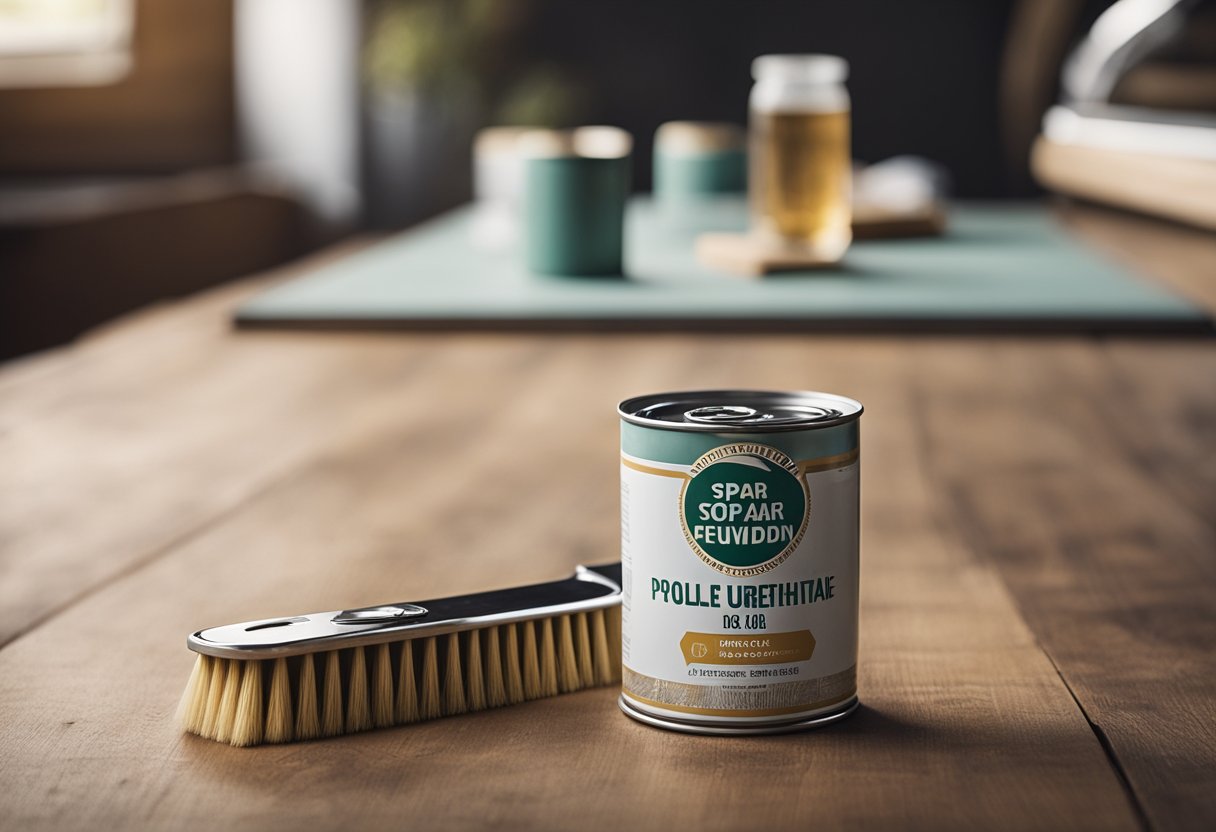
Before applying spar urethane, it is important to prepare the surface properly. This will ensure that the finish adheres well to the surface and lasts longer. Here are the steps I follow to prepare the surface:
-
Remove old finishes: If the surface has old finishes such as varnish, lacquer, or shellac, I remove them using a paint stripper. I apply the stripper with a brush, wait for the recommended time, and then scrape off the finish with a putty knife. I repeat this process until all the old finish is removed.
-
Sand the surface: After removing the old finish, I sand the surface with 220-grit sandpaper. Sanding helps to remove any remaining finish and smooth out the surface. I make sure to sand with the grain of the wood to avoid scratches and swirls.
-
Clean the surface: After sanding, I clean the surface with mineral spirits to remove any dust, wax, grease, or other debris. I apply the mineral spirits with a clean cloth and wipe the surface thoroughly.
-
Apply wood conditioner: If the surface is porous or has uneven absorption, I apply a wood conditioner to even out the absorption of the spar urethane. I apply the conditioner with a brush, wait for the recommended time, and then wipe off any excess with a clean cloth.
By following these steps, I ensure that the surface is clean, smooth, and ready for spar urethane application.
Choosing the Right Tools
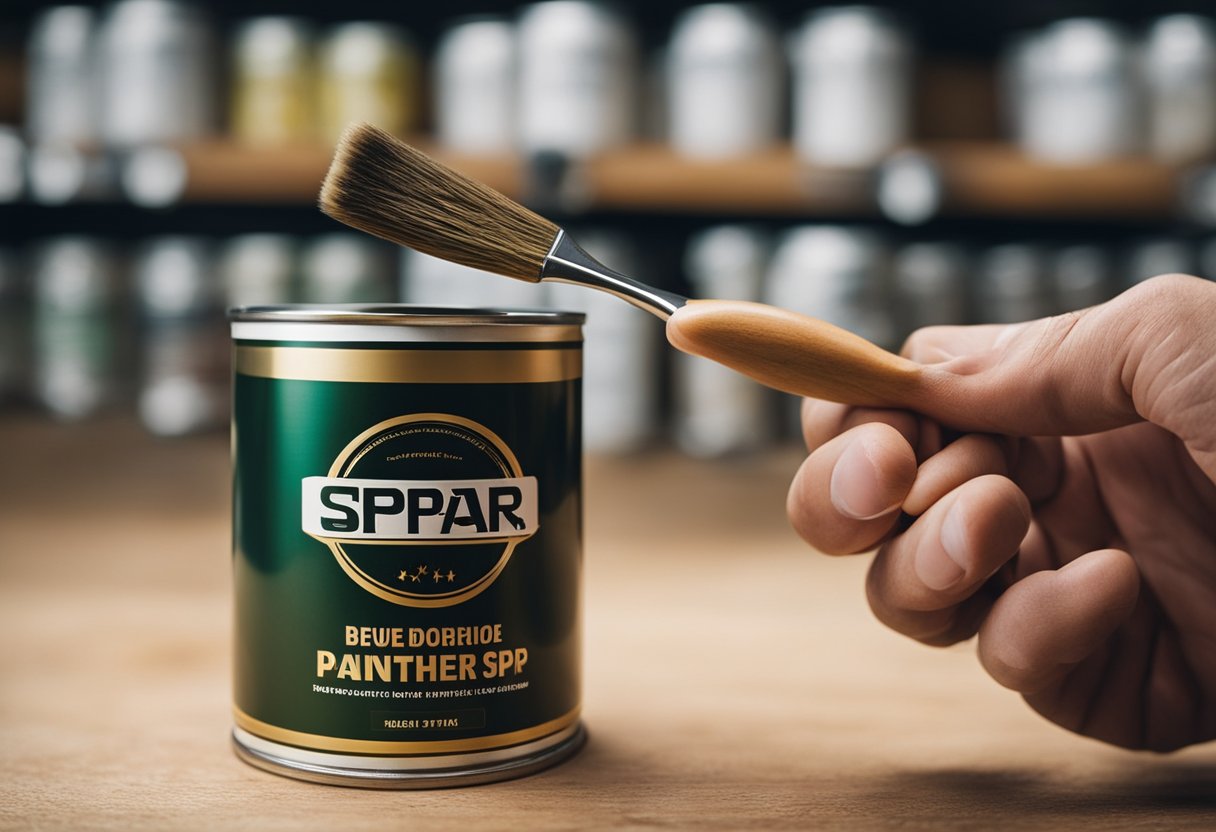
When it comes to applying spar urethane, choosing the right tools can make a big difference in the final outcome. The tools you choose will depend on the size and complexity of your project, as well as your personal preference. Here are some tips to help you choose the right tools for your project:
Brushes
Brushes are a popular choice for applying spar urethane. When selecting a brush, look for one with natural bristles, as synthetic bristles can leave brush marks. A high-quality brush will also help you achieve a smooth, even finish. It’s important to use the right size brush for the job – a small brush for small areas and a larger brush for larger areas.
Sponge Brushes
Sponge brushes are another option for applying spar urethane. They are inexpensive and can be found at most hardware stores. While they can be effective, they can also leave air bubbles and streaks if not used properly. It’s important to use a light touch when applying with a sponge brush to avoid these issues.
Spray
Spraying spar urethane is another option, but it requires specialized equipment and can be messy. If you choose to spray, make sure you have a well-ventilated area and wear protective gear. HVLP sprayers are a popular choice for spraying spar urethane, as they provide a fine, even mist.
In conclusion, choosing the right tools for applying spar urethane is essential to achieving a professional-looking finish. Whether you choose a brush, sponge brush, or spray, make sure to use the right size and technique to avoid brush strokes and achieve a smooth, even finish.
The Application Process
When it comes to applying spar urethane, the key is to take your time and apply thin coats. Rushing the process or applying thick coats can lead to a variety of issues, including bubbles, runs, and an uneven finish. Here is my step-by-step process for applying spar urethane:
-
Prepare the Surface: Before applying spar urethane, it’s essential to ensure that the surface is clean, dry, and free from dirt, oil, or grease. You may need to sand or scrape the surface to get it ready for the urethane. Once the surface is prepared, wipe it down with a clean, dry cloth to remove any dust or debris.
-
Apply the First Coat: Using a clean brush or applicator pad, apply a thin coat of spar urethane to the surface. Be sure to apply the urethane in the direction of the grain, and avoid over-brushing. Allow the first coat to dry for at least 24 hours before applying the next coat.
-
Apply Additional Coats: Depending on the desired level of protection, you may need to apply several additional coats of spar urethane. For best results, apply thin coats and allow each coat to dry for at least 24 hours before applying the next coat.
-
Apply the Final Coat: Once you’ve applied all of the necessary coats of spar urethane, it’s time to apply the final coat. This coat should be slightly thicker than the previous coats, but still thin enough to avoid runs or bubbles. Allow the final coat to dry for at least 24 hours before handling or using the surface.
-
Drying and Curing Time: After the final coat has dried for 24 hours, the surface will be dry to the touch. However, it’s important to note that spar urethane takes several days to fully cure. During this time, it’s best to avoid exposing the surface to heavy use or moisture.
In summary, applying spar urethane requires patience and attention to detail. By following these steps and applying thin coats, you can achieve a beautiful, protective finish for your project.
Maintenance and Reapplication
As with any wood finish, maintenance is key to prolonging the life of your outdoor furniture. Spar urethane is no exception. To maintain the finish, you should regularly clean your furniture and inspect it for wear and tear. If you notice any areas where the finish is peeling or showing signs of wear, it may be time to reapply the spar urethane.
When reapplying spar urethane, it is important to first sand the surface lightly to ensure proper adhesion of the new coat. If there are areas where the finish has deteriorated, you may need to sand a little more to clean it up before applying fresh finish. Once the surface is sanded, you can apply a fresh coat of spar urethane to provide maximum protection against the elements.
To ensure maximum adhesion of the new coat, it is important to follow the manufacturer’s instructions for proper application. This may include thinning the spar urethane and using the right brush or sponge brush for the job. A better way to apply spar urethane is to dilute it with mineral spirits, which will help to eliminate bubbles and brush strokes.
By maintaining your finishes and reapplying spar urethane as needed, you will ultimately prolong the life of your outdoor furniture and keep it looking beautiful for years to come.
Safety Measures During Application
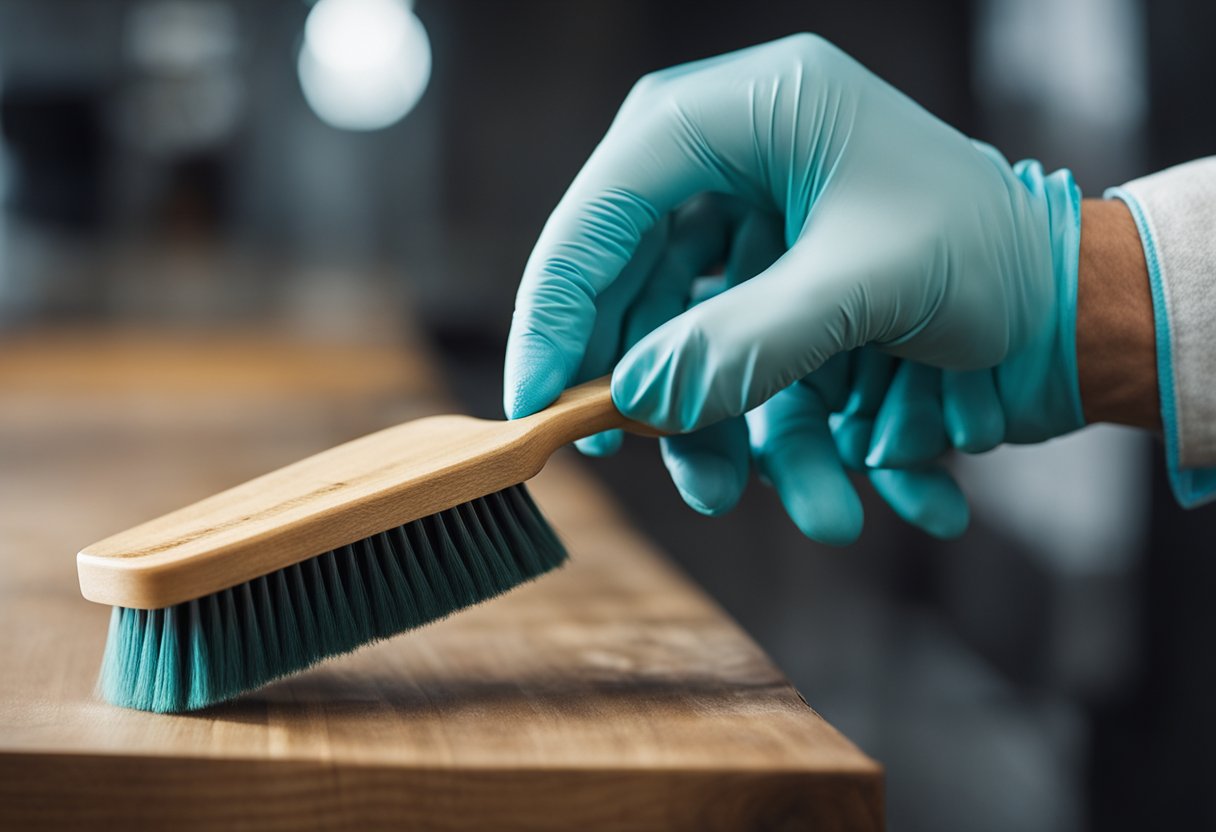
When working with spar urethane, it is important to take proper safety measures to protect yourself and those around you. Here are some tips to ensure a safe and successful application:
-
Work in a well-ventilated area: Spar urethane emits fumes that can be harmful if inhaled in large quantities. Make sure to work in a well-ventilated area to minimize your exposure to these fumes. If possible, open windows and doors to increase air circulation.
-
Wear protective gear: When applying spar urethane, it is important to wear protective gear such as gloves, safety glasses, and a respirator. Gloves will protect your hands from the urethane, while safety glasses will prevent it from getting into your eyes. A respirator will help filter out any harmful fumes.
-
Read the label: Before using spar urethane, make sure to read the label carefully. The label will provide important information about the product, including any safety precautions you should take.
-
Keep the area clean: To prevent slips and falls, make sure to keep the area around your work space clean and free of any spills or debris.
-
Dispose of materials properly: Spar urethane and any materials used to apply it should be disposed of properly. Check with your local waste management facility to determine the best way to dispose of these materials.
By following these safety measures, you can ensure a safe and successful application of spar urethane.
Common Mistakes and How to Avoid Them
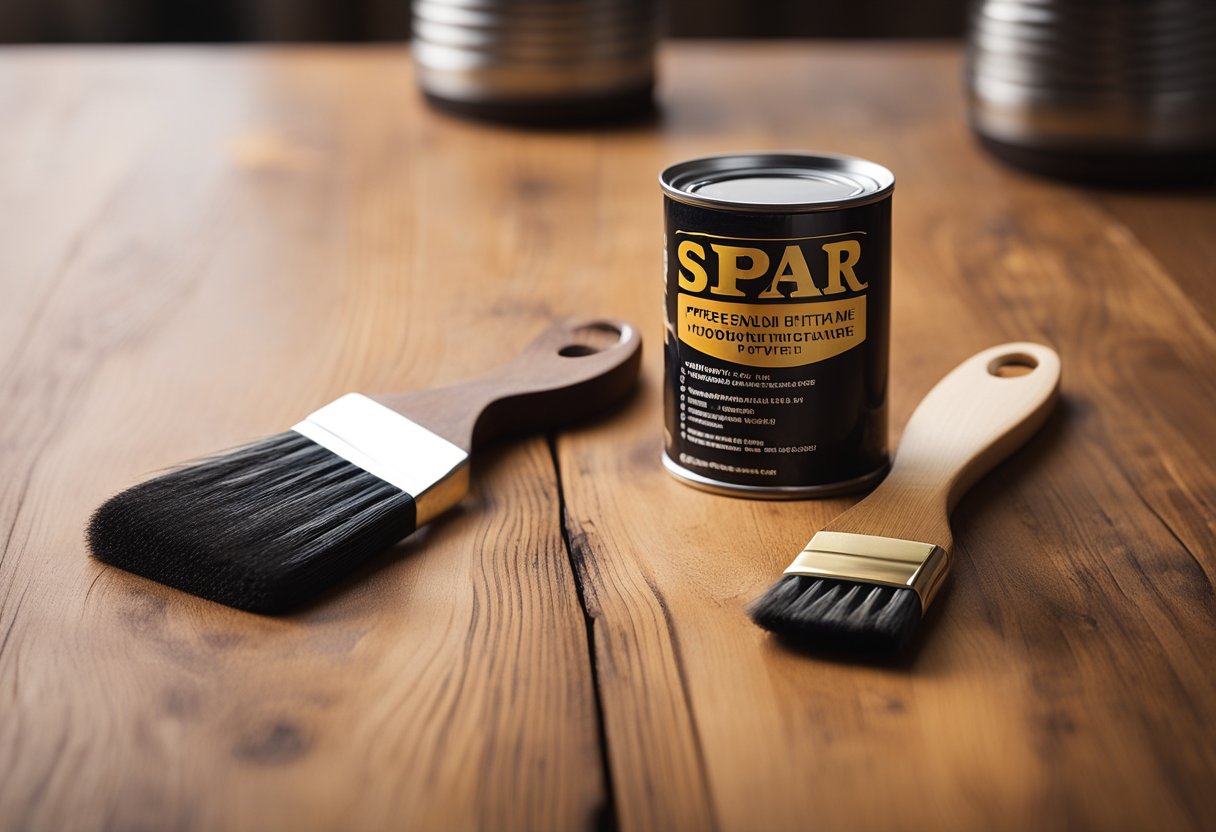
When applying spar urethane, there are several common mistakes that you should avoid to achieve a smooth and flawless finish. Here are some of the most common mistakes and how to avoid them.
Creating Bubbles
One of the most common mistakes when applying spar urethane is creating bubbles. Bubbles can occur due to several reasons, such as shaking the can too vigorously, using a low-quality brush, or applying too much urethane at once. To avoid creating bubbles, make sure to stir the urethane gently, use a high-quality brush, and apply thin coats of urethane, allowing each coat to dry completely before applying the next one.
Uneven Self-Leveling
Another common mistake when applying spar urethane is uneven self-leveling. This can occur due to the same reasons as creating bubbles, but also due to uneven application. To avoid uneven self-leveling, make sure to apply the urethane evenly and in thin coats. You can also use a foam brush to help with self-leveling.
Damaging the Surface
Spar urethane can cause damage to the surface if not applied correctly. This can occur due to applying too much pressure on the brush, using a low-quality brush, or applying too much urethane at once. To avoid damaging the surface, make sure to use a high-quality brush and apply thin coats of urethane, allowing each coat to dry completely before applying the next one.
Defects in the Finish
Defects in the finish, such as drips and brush marks, can occur due to uneven application or using a low-quality brush. To avoid defects in the finish, make sure to apply the urethane evenly and in thin coats. You can also use a foam brush to help with self-leveling, and sand the surface lightly between coats to remove any defects.
Staining the Surface
Spar urethane can cause staining on the surface if not applied correctly. This can occur due to applying too much urethane at once or not allowing each coat to dry completely before applying the next one. To avoid staining the surface, make sure to apply thin coats of urethane and allow each coat to dry completely before applying the next one. You can also sand the surface lightly between coats to remove any stains.
By avoiding these common mistakes, you can achieve a smooth and flawless finish when applying spar urethane.
Comparing Spar Urethane with Other Finishes
When it comes to protecting wood surfaces, there are several finishing options available. Each finish has its own advantages and disadvantages, and the choice of finish depends on the intended use and the desired look of the wood surface.
Spar Urethane vs. Polyurethane
Spar urethane and polyurethane are two popular clear finishes that are often used interchangeably. However, there are some key differences between the two. Polyurethane is a synthetic finish that is known for its durability and resistance to scratches, stains, and water. It is available in both water-based and oil-based formulations and can be used on a variety of surfaces, including wood, metal, and plastic.
Spar urethane, on the other hand, is a natural finish that is derived from a resin extracted from the sap of a tree. It is specifically designed for use on outdoor wood surfaces that are exposed to the elements. Spar urethane is more flexible than polyurethane, which makes it better suited for use on surfaces that expand and contract due to changes in temperature and humidity. It also has a slightly yellowish or amber tone that gives wood a warm, natural look.
Spar Urethane vs. Varnish
Varnish is another popular clear finish that is often used on wood surfaces. Like spar urethane, varnish is a natural finish that is derived from tree resin. It is available in both oil-based and water-based formulations and is known for its durability and resistance to water, heat, and chemicals.
However, varnish has a few drawbacks when compared to spar urethane. For one, it tends to yellow over time, which can detract from the natural beauty of the wood. It also has a longer drying time than spar urethane, which can be inconvenient for those who need to finish a project quickly.
Conclusion
In summary, spar urethane is a clear finish that is designed specifically for use on outdoor wood surfaces that are exposed to the elements. It is more flexible than polyurethane and has a warm, natural look that enhances the beauty of wood. While varnish is also a natural finish that is durable and water-resistant, it tends to yellow over time and has a longer drying time than spar urethane. Ultimately, the choice of finish depends on the intended use and the desired look of the wood surface.
Spar Urethane for Different Surfaces
When it comes to applying spar urethane, it’s important to consider the surface you’ll be coating. Different surfaces require different preparation and application techniques to achieve the best results. Here’s what I recommend for various surfaces:
Furniture
For furniture, it’s best to apply spar urethane after sanding the surface to a smooth finish. I recommend using a foam brush or a natural bristle brush to apply the spar urethane in thin, even coats. Allow each coat to dry completely before applying the next one. Sand lightly between coats with 220-grit sandpaper to remove any imperfections.
Boats
Boats require special attention when it comes to applying spar urethane. Before applying the spar urethane, make sure the surface is clean and free of any contaminants. I recommend using a marine-grade spar urethane for boats, as it provides better protection against the harsh marine environment. Apply the spar urethane in thin, even coats using a foam brush or a natural bristle brush.
Doors and Windows
Doors and windows require a durable finish that can withstand exposure to the elements. Before applying spar urethane, prepare the surface by sanding it to a smooth finish. Apply the spar urethane using a foam brush or a natural bristle brush in thin, even coats. Allow each coat to dry completely before applying the next one. Sand lightly between coats with 220-grit sandpaper to remove any imperfections.
Decks and Outdoor Wood Surfaces
Decks and outdoor wood surfaces require a finish that can withstand exposure to the elements and foot traffic. Before applying spar urethane, prepare the surface by sanding it to a smooth finish. Apply the spar urethane using a natural bristle brush or a lambswool applicator in thin, even coats. Allow each coat to dry completely before applying the next one. Sand lightly between coats with 220-grit sandpaper to remove any imperfections.
Patio Furniture
Patio furniture requires a finish that can withstand exposure to the elements and frequent use. Before applying spar urethane, prepare the surface by sanding it to a smooth finish. Apply the spar urethane using a foam brush or a natural bristle brush in thin, even coats. Allow each coat to dry completely before applying the next one. Sand lightly between coats with 220-grit sandpaper to remove any imperfections.
Trim
Trim requires a finish that can withstand exposure to the elements and frequent handling. Before applying spar urethane, prepare the surface by sanding it to a smooth finish. Apply the spar urethane using a foam brush or a natural bristle brush in thin, even coats. Allow each coat to dry completely before applying the next one. Sand lightly between coats with 220-grit sandpaper to remove any imperfections.
Outdoor Projects
For outdoor projects, it’s important to use a spar urethane that can withstand exposure to the elements. Before applying spar urethane, prepare the surface by sanding it to a smooth finish. Apply the spar urethane using a foam brush or a natural bristle brush in thin, even coats. Allow each coat to dry completely before applying the next one. Sand lightly between coats with 220-grit sandpaper to remove any imperfections.
Overall, the key to successful spar urethane application is proper preparation and application technique. With the right tools and techniques, you can achieve a durable finish that will protect your surfaces for years to come.
Frequently Asked Questions
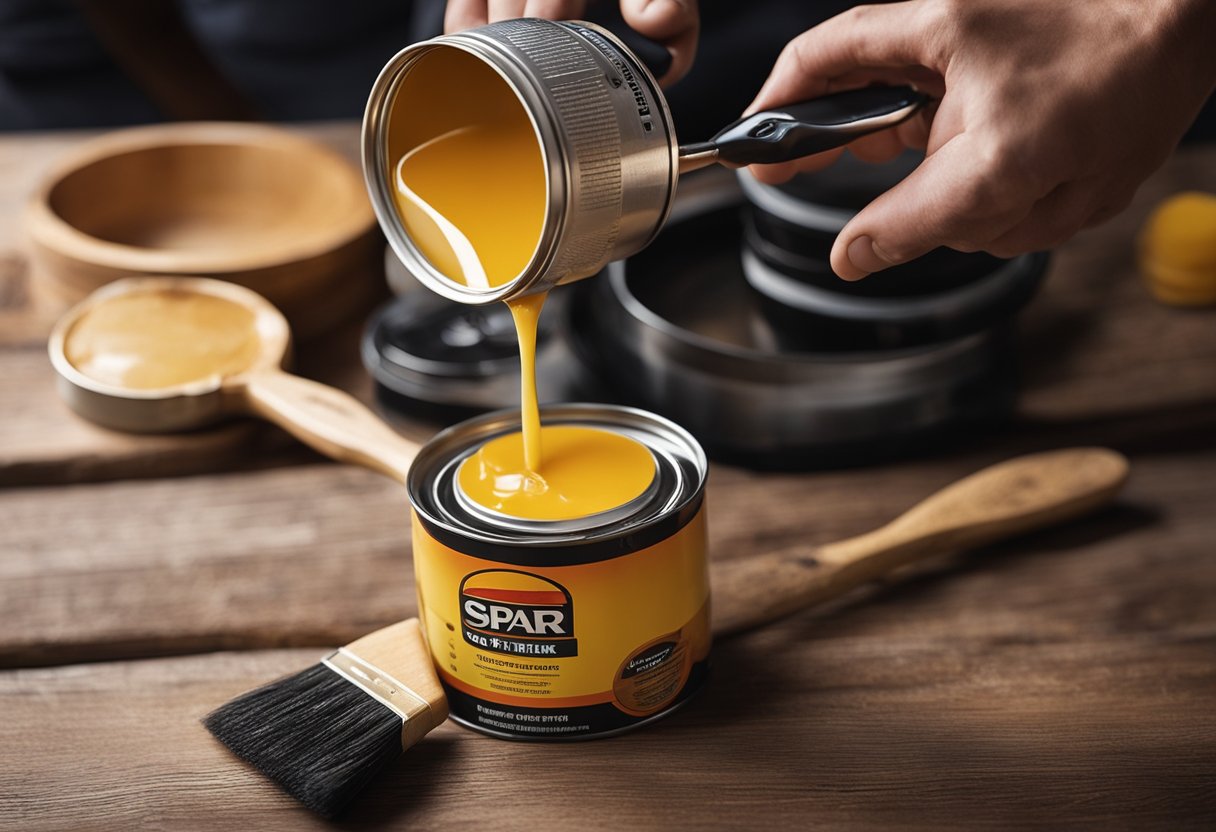
How many coats of spar urethane should be applied?
The number of coats of spar urethane to apply depends on the project and the desired level of protection. Typically, two to three coats of spar urethane are recommended for optimal protection. However, if the project will be exposed to harsh weather conditions, it may be necessary to apply additional coats.
What grit sandpaper to use between coats of spar urethane?
It is recommended to use a fine grit sandpaper, such as 220-grit, between coats of spar urethane. This will help to smooth out any imperfections in the previous coat and provide a better surface for the next coat to adhere to.
How do you smooth spar urethane finish?
To smooth out a spar urethane finish, use a fine grit sandpaper, such as 220-grit, and sand lightly in a circular motion. Be careful not to sand too aggressively, as this can damage the finish. After sanding, wipe the surface clean with a tack cloth.
Do you have to sand between coats of spar urethane?
Yes, it is recommended to sand between coats of spar urethane. This helps to smooth out any imperfections in the previous coat and provide a better surface for the next coat to adhere to. Be sure to wipe the surface clean with a tack cloth after sanding.
How to apply spar urethane to a door?
When applying spar urethane to a door, start by removing the door from its hinges and laying it flat on a work surface. Apply the spar urethane with a high-quality brush, working in the direction of the grain. Be sure to apply a thin, even coat and avoid overbrushing. Allow the first coat to dry completely before applying additional coats.
How do you prevent bubbles when applying spar urethane?
To prevent bubbles when applying spar urethane, be sure to stir the urethane gently and avoid shaking the can. Apply the urethane with a high-quality brush, working in the direction of the grain. Be sure to apply a thin, even coat and avoid overbrushing. If bubbles do appear, use a needle or pin to gently pop them before the urethane dries.

Hi, I’m Sal Muller of Tooltrip.com. My DIY experience led me to understand essential power tools for home projects. Tooltrip.com guides enthusiasts and professionals in choosing right tools for any job. I provide concise top tool reviews for easier, efficient DIY.

